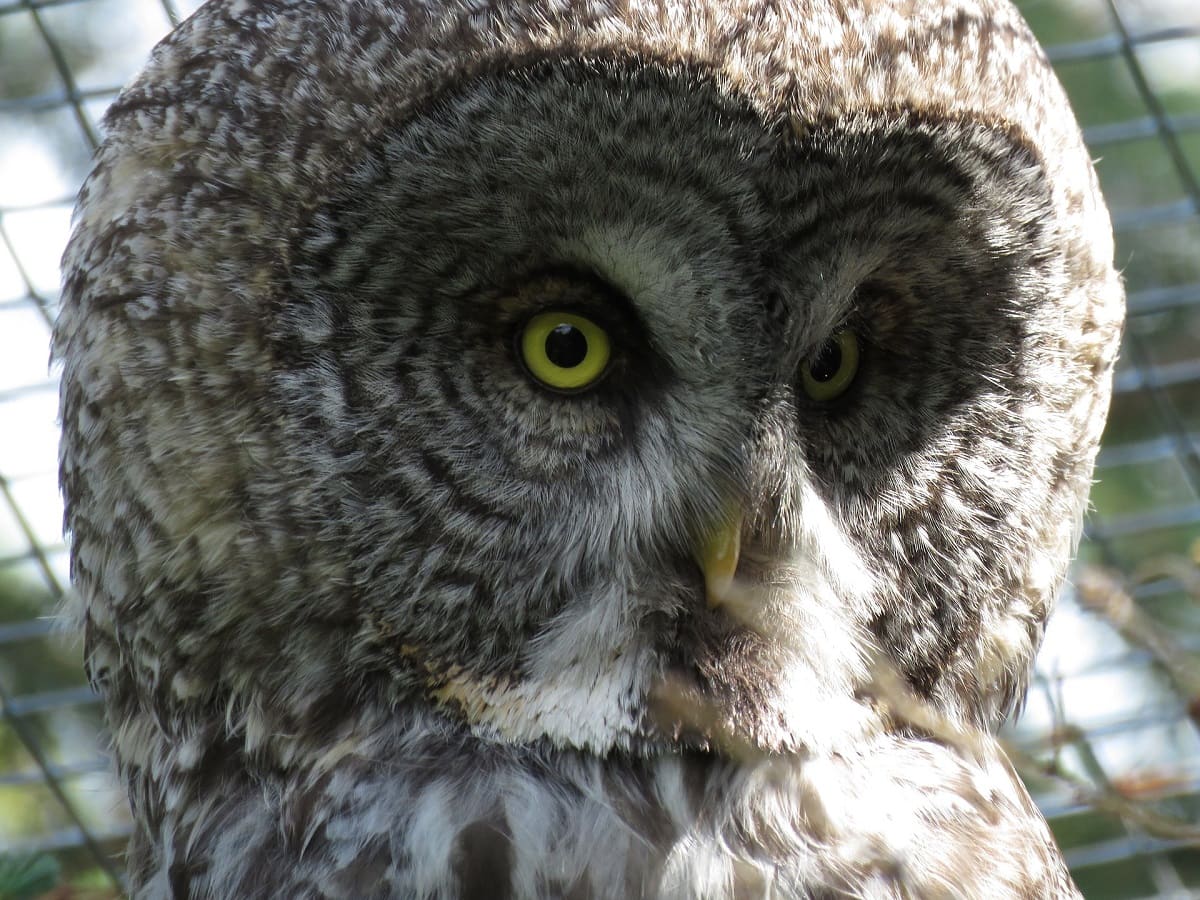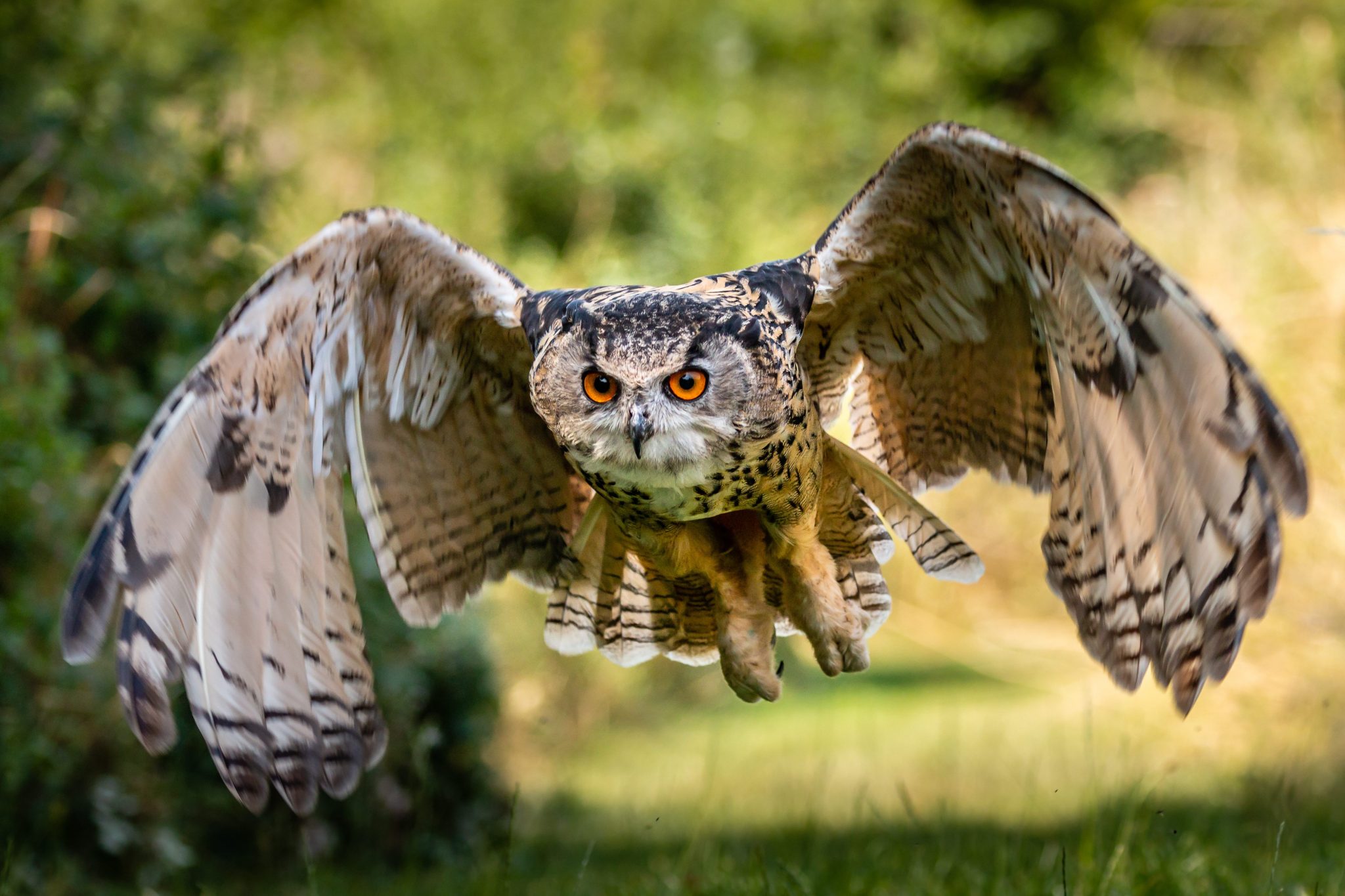Biggest Owl In The World: Blakiston's Fish Owl Facts!
Do you know which owl reigns supreme in the avian world, boasting both impressive size and a mysterious allure? The Blakiston's fish owl, the largest owl species on Earth, embodies the untamed beauty of nature, holding a special place in the hearts of wildlife enthusiasts and conservationists alike. This article delves into the world of this magnificent creature, exploring its unique characteristics, its essential role in its ecosystem, and the challenges it faces in an ever-changing world. We aim to provide a comprehensive look at the Blakiston's fish owl, celebrating its existence and shedding light on the importance of its conservation.
The Blakiston's fish owl, scientifically known as Bubo blakistoni, is far more than just a large bird; it is a testament to the rich biodiversity of its native habitats across Asia. Its presence is an indicator of a healthy ecosystem, highlighting the delicate balance of nature and the urgent need for conservation efforts. By understanding the intricate details of its life, from its physical attributes to its feeding habits, we can gain a deeper appreciation for why this owl deserves our attention and protection. Its existence reminds us of the responsibilities we bear to protect the natural world.
This article navigates through various aspects of the Blakiston's fish owl's life, including its physical characteristics, preferred habitats, dietary habits, and current conservation challenges. Each section offers valuable insights, supported by reliable data and credible sources, ensuring a comprehensive understanding of what makes the Blakiston's fish owl the largest and most intriguing owl in the world.
- Remoteiot Cloud Connect Connect Iot Devices To The Cloud Easily
- Secure Raspberry Pi Access Remoteiot Platform Ssh Key Guide
Table of Contents
- Biography of Blakiston's Fish Owl
- Physical Characteristics
- Natural Habitat
- Diet and Feeding Habits
- Reproduction and Lifespan
- Conservation Status
- Cultural Significance
Biography of Blakiston's Fish Owl
The Blakiston's fish owl is among the most elusive and rarely seen owls globally, a majestic figure shrouded in mystery. Named in honor of the British naturalist Thomas Blakiston, this owl calls eastern Russia, Japan, and parts of China its home. Below is a detailed look at this remarkable bird, presented in a comprehensive table designed for easy integration into content management systems like WordPress:
| Attribute | Details |
|---|---|
| Scientific Name | Bubo blakistoni |
| Family | Strigidae |
| Length | Up to 66 cm (26 in) |
| Wingspan | Up to 190 cm (75 in) |
| Weight | Up to 4.6 kg (10 lb) |
| Habitat | Riparian forests and wetlands |
| Diet | Fish and small mammals |
| Conservation Status | Endangered |
| Interesting Fact | Can catch fish from under the ice |
| Reference | World Wildlife Fund |
Physical Characteristics
The Blakiston's fish owl is immediately recognizable, standing out due to its imposing size and distinctive features. Its a bird designed for survival in a challenging environment, a true testament to the power of adaptation.
- Size: It is, without question, the largest owl species, often reaching lengths of up to 66 cm and boasting a wingspan that can stretch to nearly 190 cm. Its sheer size is awe-inspiring.
- Coloration: The plumage is a masterclass in camouflage, a blend of browns and creams that allows the owl to blend seamlessly into the backdrop of the forest. This coloration is a vital adaptation for hunting and survival.
- Eyes: The owl possesses large, captivating yellow eyes, perfectly adapted for nocturnal hunting. These eyes are a key element of its hunting prowess.
- Facial Disc: A prominent facial disc helps the owl to pinpoint the source of sounds with exceptional accuracy. This, combined with its keen hearing, allows the owl to locate prey even in the dead of night.
Unique Adaptations
The Blakiston's fish owl has evolved unique features, allowing it to thrive in its specific habitat. These adaptations demonstrate the remarkable power of natural selection.
- Ssh Remote Iot On Raspberry Pi A Beginners Guide
- Does Barron Trump Play Guitar Rumors Musical Interests
- Strong Talons: These owls are equipped with powerful talons, a necessary tool for catching slippery fish. These talons are incredibly sharp and strong, enabling the owl to secure its meal.
- Silent Flight: Their feathers are specially adapted for silent flight. This adaptation is critical for stealth hunting, allowing the owl to approach its prey undetected.
Natural Habitat
The Blakiston's fish owl is incredibly specific about its choice of habitat, requiring environments that provide the resources vital for its survival. The presence of these owls is an indicator of a healthy, undisturbed ecosystem.
- Riparian Forests: These owls are primarily found in riparian forests those forests that border rivers and streams. The presence of running water is essential for their survival.
- Wetlands: They also favor wetlands, areas rich in water sources that support abundant fish populations, which form a crucial part of their diet. These wetlands offer both hunting grounds and refuge.
Geographic Distribution
The owls range is limited, highlighting the importance of conservation efforts within specific geographic areas:
- Eastern Russia: Specifically, the Primorsky and Khabarovsk regions.
- Northeastern China: Primarily in the areas bordering Russia.
- Hokkaido, Japan: The northernmost island of Japan.
Diet and Feeding Habits
The Blakiston's fish owl's diet is precisely tailored to its environment. Its feeding habits reflect its unique adaptations and its role within the ecosystem.
- Fish: The mainstay of its diet, these owls are experts at hunting fish. They use their sharp talons to snatch their prey from the water.
- Small Mammals: They also occasionally prey on small mammals and amphibians, supplementing their diet with these opportunistic meals. This demonstrates the owl's adaptability.
Hunting Techniques
The Blakiston's fish owl employs several hunting methods to secure its meals, a testament to its intelligence and adaptability. They are patient and persistent hunters.
- Perch Hunting: They often perch silently on branches overlooking the water, patiently waiting for a fish to come within striking distance. This technique requires stillness and patience.
- Night Hunting: Primarily nocturnal, they hunt during the night when their prey is most active. The owl's adaptations for night vision and silent flight make this possible.
Reproduction and Lifespan
The breeding cycle of the Blakiston's fish owl is a critical aspect of its life cycle, directly impacting its population. The details of their breeding and lifespan provide insights into their resilience and vulnerabilities.
The breeding season for the Blakiston's fish owl usually begins in early spring. This is the time when the environment is most conducive to raising young.
- Tree Cavities: They commonly nest in the cavities of large trees, often utilizing abandoned nests of other large birds.
- Cliffs: Some owls choose to nest on cliff ledges near water sources, providing a vantage point over their hunting grounds.
Lifespan
In the wild, Blakiston's fish owls can live for up to 15 years. However, their lifespan can be curtailed due to threats, such as habitat loss and human activities.
Conservation Status
The Blakiston's fish owl is currently classified as endangered, highlighting the urgent need for protection. Several factors contribute to the precariousness of this magnificent bird.
- Habitat Destruction: Deforestation and the draining of wetlands have a devastating impact on their natural habitats, reducing both hunting grounds and nesting sites.
- Pollution: Water pollution affects fish populations, drastically reducing the availability of food for the owls.
- Human Disturbance: Increased human activity in their habitats, from logging to tourism, can disrupt their breeding and hunting behavior.
Conservation Efforts
Various organizations and governments have initiated conservation programs to protect the Blakiston's fish owl. These efforts are essential for ensuring the survival of this species.
- Habitat Protection: Establishing protected areas and reserves is crucial. These reserves provide safe havens for the owls, safeguarding their habitats and reducing human encroachment.
- Public Awareness: Raising public awareness about the owl's conservation status and its ecological significance is a vital step in garnering support for conservation efforts.
Cultural Significance
Owls have long been a potent symbol in many cultures, often representing wisdom and mystery. The Blakiston's fish owl holds a special place in local folklore, frequently viewed as a guardian spirit of the forests and rivers, a testament to its revered status within its environment. The owl's presence is seen as an omen of good fortune by many. The people near the owl's habitat also consider them as a symbol of resilience.

.jpg)

Detail Author:
- Name : Israel Schroeder Sr.
- Username : drath
- Email : gusikowski.lorna@hotmail.com
- Birthdate : 1995-11-25
- Address : 60830 McCullough Groves Lake Samara, ME 05011-2023
- Phone : +1 (442) 309-9744
- Company : Daniel PLC
- Job : Pediatricians
- Bio : Et aut nobis fugit quisquam alias. Ipsum non ea incidunt id. Iste non ipsa corrupti id inventore. Iure est aspernatur repellat neque mollitia amet et.
Socials
instagram:
- url : https://instagram.com/annamarie4038
- username : annamarie4038
- bio : Totam aperiam est quis quo. Nulla aut accusantium nam repudiandae aliquam.
- followers : 4087
- following : 1773
tiktok:
- url : https://tiktok.com/@annamariehayes
- username : annamariehayes
- bio : Vero et et voluptatum ipsum suscipit et debitis.
- followers : 3535
- following : 2717
twitter:
- url : https://twitter.com/ahayes
- username : ahayes
- bio : Qui illum totam unde quasi veritatis facere ullam. Dolor illum ut fugit iure aliquam. Id quia laboriosam animi rerum.
- followers : 5807
- following : 796
facebook:
- url : https://facebook.com/annamarie.hayes
- username : annamarie.hayes
- bio : Dolorum perspiciatis deleniti nulla. Velit odit voluptatem delectus sed.
- followers : 800
- following : 1550